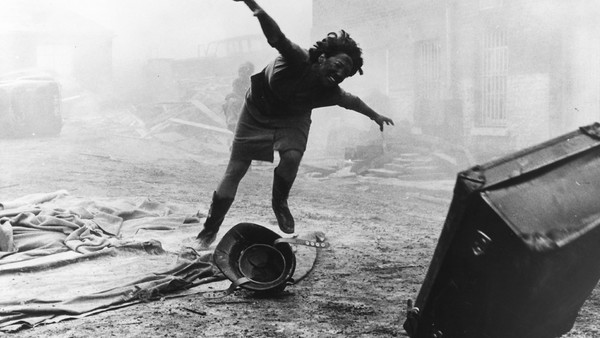The Disturbing Truth Behind The Four-Minute Warning

In 1966, the BBC produced The War Game, a docudrama depicting a hypothetical nuclear attack, which included tips on public safety for such an event. However, due to its horrific nature, the corporation deemed the programme unsuitable for broadcast. Instead, The War Game was released at selected cinemas across the country for one month. The docudrama won an Oscar for Best Documentary Feature in 1967 and remains a cult classic to this day. In 1985, it was televised for the first time to commemorate the 40th anniversary of the Hiroshima bombing.
Capitalising on the popularity of television in the 1970s, pamphlets were reduced, and Protect and Survive focused on the visual medium to keep Brits informed. Originally produced in the late 70s as a classified programme only to be used in a state of emergency, these infomercials were leaked to the BBC and aired on a 1980 episode of Panorama.
The twenty episodes focused on various points of note and instructed audiences on what to do in the case of an attack, from the simple definition of fallout as dust that lingers in the air for days, to instructions for the humiliating task of creating a makeshift emergency toilet - which included buckets and plastic bags. The most harrowing advice, however, was what to do in the event of someone dying around you. The narrator calmly informs the audience to remove a cadaver from the vicinity and wrap it in plastic, paper or bed sheets. If a body had been in the house for more than five days, burying it in an outside trench was advised.
These infomercials were narrated by the serenely authoritative voice of Patrick Allen, who is most known for his voice over in the first series of Blackadder. Protect and Survive also contained simple cartoons and models of houses for demonstrations, avoiding the horror show depiction present in The War Games. The presentation of the instructions is akin to the emergency information given at the start of each commercial flight.
After the Protect and Survive videos had been shared with the British public, the threat of nuclear war felt ever closer to home. In 1982, the popular science series Q.E.D. released their own ‘Guide to Armageddon.’ This episode began with the statement that victims’ skin could be exposed to heat above 70 degrees and burn. Shattered glass was an also understated threat, as it could travel at speeds of 35mph, with the ability to severely lacerate bodies of those nearby. Alongside these bleak possibilities, the documentary detailed a hypothetical bomb blast over London and attempts to answer the question: could we survive a nuclear blast?
Article continues on the next page...